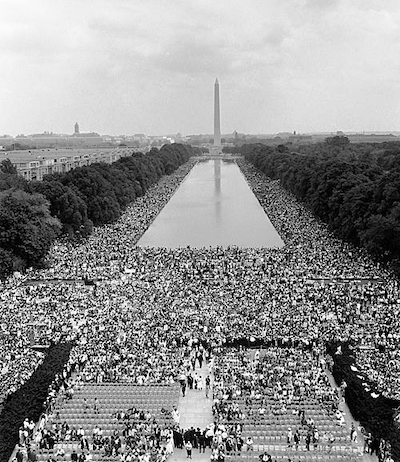
 |
| March on Washington - Public Domain Image |
Background
On August 28, 1963, an estimated 250,000 people converged on the nation's capital for the historic March on Washington for Jobs and Freedom. This monumental event marked a watershed moment in the American Civil Rights Movement, bringing together a diverse coalition of individuals advocating for racial and economic justice.
Seeking Fairness
Organized by a coalition of civil rights, labor, and religious organizations, the March on Washington sought to address various issues, including desegregation, fair employment practices, and economic equality. The event was a powerful display of unity, with participants from different races, backgrounds, and walks of life coming together to demand justice and equality.
A Dream
One of the defining features of the march was the charismatic leadership of Dr. Martin Luther King Jr., who delivered his iconic "I Have a Dream" speech from the steps of the Lincoln Memorial. King's eloquent words resonated with the crowd and the nation, emphasizing the dream of a future where individuals would be judged by their character rather than the color of their skin.
Advancing the Cause of Civil Rights
The march was not only a platform for speeches but also a demonstration of solidarity. Participants carried signs and banners with powerful messages, expressing their commitment to freedom and justice. The peaceful nature of the march underscored the movement's dedication to nonviolent protest as a means of effecting social and political change.
The significance of the March on Washington extended beyond its immediate impact. The event played a pivotal role in influencing public opinion and policy. It contributed to the passage of the Civil Rights Act of 1964 and the Voting Rights Act of 1965, landmark pieces of legislation that aimed to dismantle institutionalized racism and promote equal rights.
Turning Point
The March on Washington also marked a turning point in the perception of the Civil Rights Movement. It showcased the movement's ability to mobilize large numbers of people and highlighted the demand for justice from a broad cross-section of American society. The media coverage of the march brought the issues of racial inequality and civil rights to the forefront of national consciousness.
Symbolism
While the march was a high point in the struggle for civil rights, it did not mark the end of the challenges faced by the movement. However, its impact on American society and the legislative landscape cannot be overstated. The March on Washington remains a symbol of the power of collective action, a reminder that individuals, united in purpose, can effect profound change in the pursuit of justice and equality.